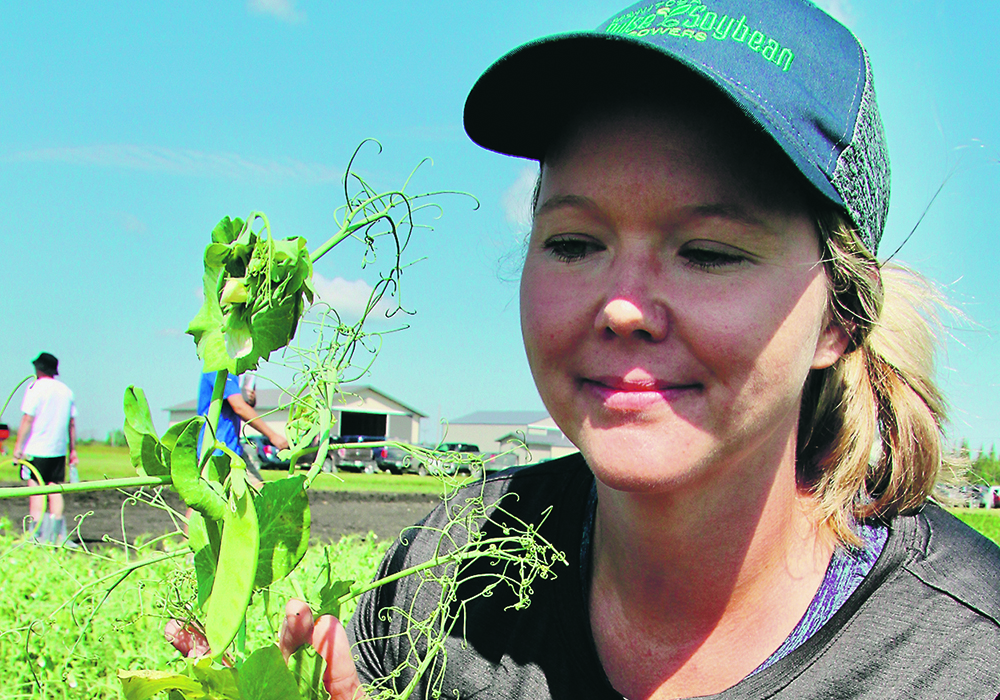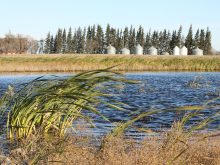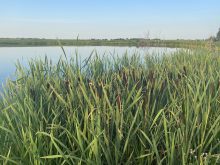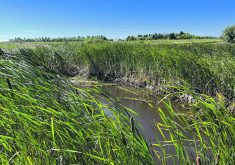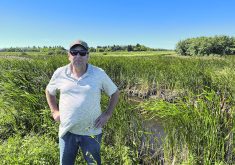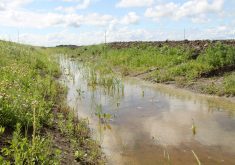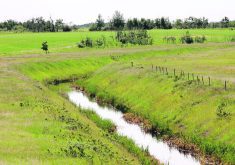Some pea crops struggle in Manitoba due to excess moisture, but fields with good drainage could produce excellent yields
ARBORG, Man. — Standing next to a pea plot in Manitoba’s Interlake, Terry Buss stopped his presentation to ask the audience a question.
Buss, a crop production expert with Manitoba Agriculture in Beausejour, said there are field pea crops in eastern Manitoba where the yield potential is 70 bushels per acre. And eight kilometres away from that field, another pea crop will likely produce 20 bu. in 2022.
“Can anyone hazard a guess as to the difference between those two locations?” Buss asked about 60 farmers, agronomists and others, who took part in the Prairies East Sustainable Agriculture Initiative (PESAI) field tour, held July 26 at the research farm near Arborg.
Read Also

Pakistan reopens its doors to Canadian canola
Pakistan reopens its doors to Canadian canola after a three-year hiatus.
The first response was “rainfall”, which was not correct.
The second answer was the right one: “drainage”.
“Peas are this weird creature…. They can take a lot of water. They grow these things in Western Europe, they’re quite productive in the U.K…. But they have a heck of a lot of (field) drainage,” Buss said. “This year the biggest limit on field pea yield (in Manitoba) is soil structure, soil drainage.”
Manitoba farmers have become more interested in peas and field pea agronomy because acres have expanded in the province.
In 2018, about 84,000 acres of field peas were grown in the province, but in 2021 it was closer to 225,000 acres.
More farmers are growing peas because of new marketing opportunities in the province. Last year Roquette opened the world’s largest pea protein plant in Portage la Prairie.
The $500 million plant has the capacity to process 125,000 tonnes of peas annually, thus creating new demand for the pulse crop in Manitoba.
But 2021 was a difficult year for peas as severe drought cut into yields.
“Even though peas require less moisture than other crops, they were still affected by drought. The average yield (in 2021) was 36 bu. per acre,” said Jennifer McCombe-Theroux, a production specialist with Manitoba Pulse and Soybean Growers.
Acres will likely be down compared to 2021, possibly around 200,000 acres, but many farmers have returned to peas or are trying them for the first time.
“We’re seeing a lot wider distribution of pea acres…. It isn’t just in the northwest anymore. I live in the Notre Dame area and there are a lot of growers who have diversified into peas,” McCombe-Theroux said. “For lighter soil types or based on drainage of these fields, they (are)… a bit more conducive to field pea production.”
In eastern Manitoba, which has heavier clay soils, field peas are struggling with root rot and other issues related to excess moisture.
Many parts of the province have received 150 to 200 percent of normal moisture from May 1 to the end of July.
Despite the excess rain, the crop is faring quite well, McCombe-Theroux said.
“It’s a wet year. There are low spots and drowned-out spots that were not seeded. But there are… a lot of great looking fields.”
One of the major diseases of field peas is mycosphaerella blight, which can cause yield losses of more than 30 percent.
Growers have been applying fungicides to control the disease, but Manitoba’s low acreage of field peas in recent years is protecting the 2022 crop.
Peas are the only host for mycosphaerella and Manitoba farmers didn’t seed a lot of peas in the 2010s, which means not many fields have heavy loads of mycosphaerella spores in the soil.
Still, growers need to watch for mycosphaerella, and a second application of fungicide may be needed this summer.
As well, root rot is appearing in some pea fields in the province.
“We do encourage farmers to properly identify these root rots, just to help with those management decisions, going forward,” McCombe-Theroux said.
Another issue is pea aphids. A small number of aphids can compromise yield.
“It’s one to two per plant tips. You’re looking at that top eight inches. We always say to open up that clam leaf, to take a good look in there,” McCombe-Theroux said.
“The key time to protect peas from aphids (with an insecticide) is during that pod formation and elongation.”
Harvest is weeks away, but the 2022 pea crop in Manitoba could produce decent yields, she added.
“Considering the (excess) moisture we’ve received this year, along with late seeding, there is still a good and strong yield potential for many pea crops.”


